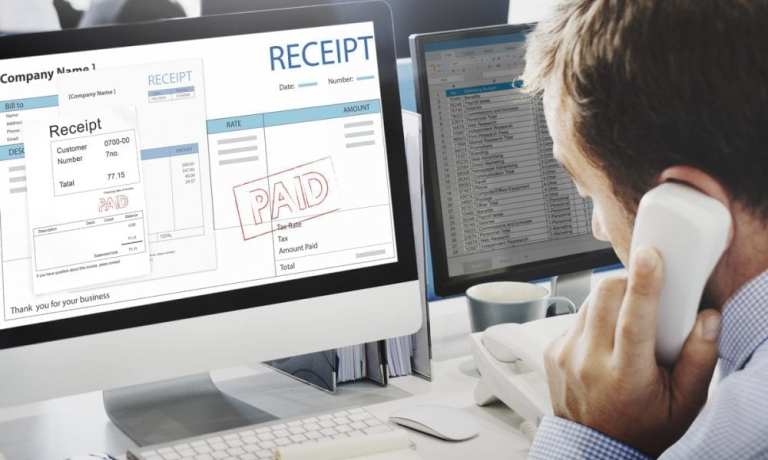
Chief financial officers (CFOs) are waking up to the importance of electronic B2B payments, but deciding to ditch the paper check is only part of the battle. What comes next can be a challenging and confusing process of understanding which electronic payment methods to adopt, and how.
It’s a complex hurdle that can challenge B2B buyers and suppliers alike, and as finance chiefs work to overcome it, B2B FinTechs are stepping in to help accounts payable and accounts receivable teams integrate the tools that can move money from one business to another.
Yet B2B payments is about far more than moving money, as Miles Schwartz, co-founder of Canada-based Zūm Rails recently told PYMNTS. He discussed the value of a mix-and-match approach to choosing payment rails for B2B transactions and why optimizing money movement isn’t enough for treasurers and finance chiefs today.
Consolidating Rails
In the U.S., a CFO that has decided to either stop accepting paper checks or stop sending them (or both) has another major decision to make: Which payment rail, or payment rails, will fill the void?
In Canada, meanwhile, while checks are a rarity, payment infrastructure innovation has created more options from which to choose.
There is no single correct answer, of course.
“Every payment method has different pros and cons,” said Schwartz, noting that as businesses seek to give their own clients more choice, they must also take into consideration factors such as settlement, presentment and the ability for a payment method to embed itself in existing workflows.
EFT (or electronic funds transfer) has historically been the most common — and cheapest — electronic payment rail in Canada, but businesses on both sides of a B2B transaction are increasingly exploring the value in real-time payment networks that can promote cash flow. Canada’s Interact has the benefit of email-based presentment, while Visa Direct offers elevated compliance and security.
Having the ability to choose which payment methods a business can offer its customers is important to a positive buyer-supplier relationship, but adopting the infrastructure to integrate so many services can be a headache. Plus, noted Schwartz, it can also expand a firm’s exposure to data breaches and other security issues.
What’s more, he said, Canada’s banking ecosystem — dominated by about five main players — has lagged behind in its ability to connect businesses to these various payment networks in an efficient manner.
“Some people think the banks have it all figured out,” Schwartz said. “But the banks are actually very behind, especially in Canada. The need to innovate is less pertinent to banks because they control the market.”
For Zūm Rails, consolidating a variety of payment rails (including, so far, EFT/ACH, Visa Direct and Interac), means unifying this offering under a single roof. Working with a single vendor to gain access to these rails can be a much more economically sound and streamlined way to present this payment choice to clients.
Beyond Money Movement
For B2B firms looking to embrace payment rail choice, the deciding factors go beyond the movement of money itself: a focus on how fast money moves, or how affordable it is to move it, for example.
As Schwartz noted, firms need to consider a variety of other factors ranging from security to data integration when adopting new payment methods and services.
“You have to streamline onboarding, KYC [know your customer] and AML [anti-money laundering], then you have to move the funds,” he said. “Then there’s the operation side, and then you have to make sure there’s reconciliation, and then closing the invoice. It’s not just moving money from point A to point B.”
Security has been a particularly important piece of the B2B payment rails puzzle for Zūm Rails, which recently announced it achieved SOC 2 compliance, a reflection of its dedication to data security, Schwartz said. Other initiatives, including proprietary validation methods, integrated into the FinTech’s onboarding and processing workflows have heightened security and data integrity too.
At the same time, firms need solutions that optimize the end-user experience and provide a positive experience for users’ business customers, too. That means seamless onboarding and data integrations to promote automated reconciliations.
Businesses know they need a friction-free way to embrace payment choice. Yet as more new payment methods and rails surface, it can be difficult to understand which infrastructure is the best fit depending on a firm, its business partners, and the context of a transaction.
Collaborating with a third party that can not only consolidate payment choices and enhance a product with ancillary features but also promotes education and awareness about these payment networks will be key to optimizing B2B payments and supporting the adoption of some of the younger, less familiar services out there today.
“We spend time educating people on how the new rails work,” Schwartz said. “Everyone’s been using EFT, but changes in payments are all happening very fast. Right now, educating clients on the different methods that are available in Canada, and understanding their workflow and fitting our gateway within that workflow, and creating the best payment experience based on their needs, is the main focus.”